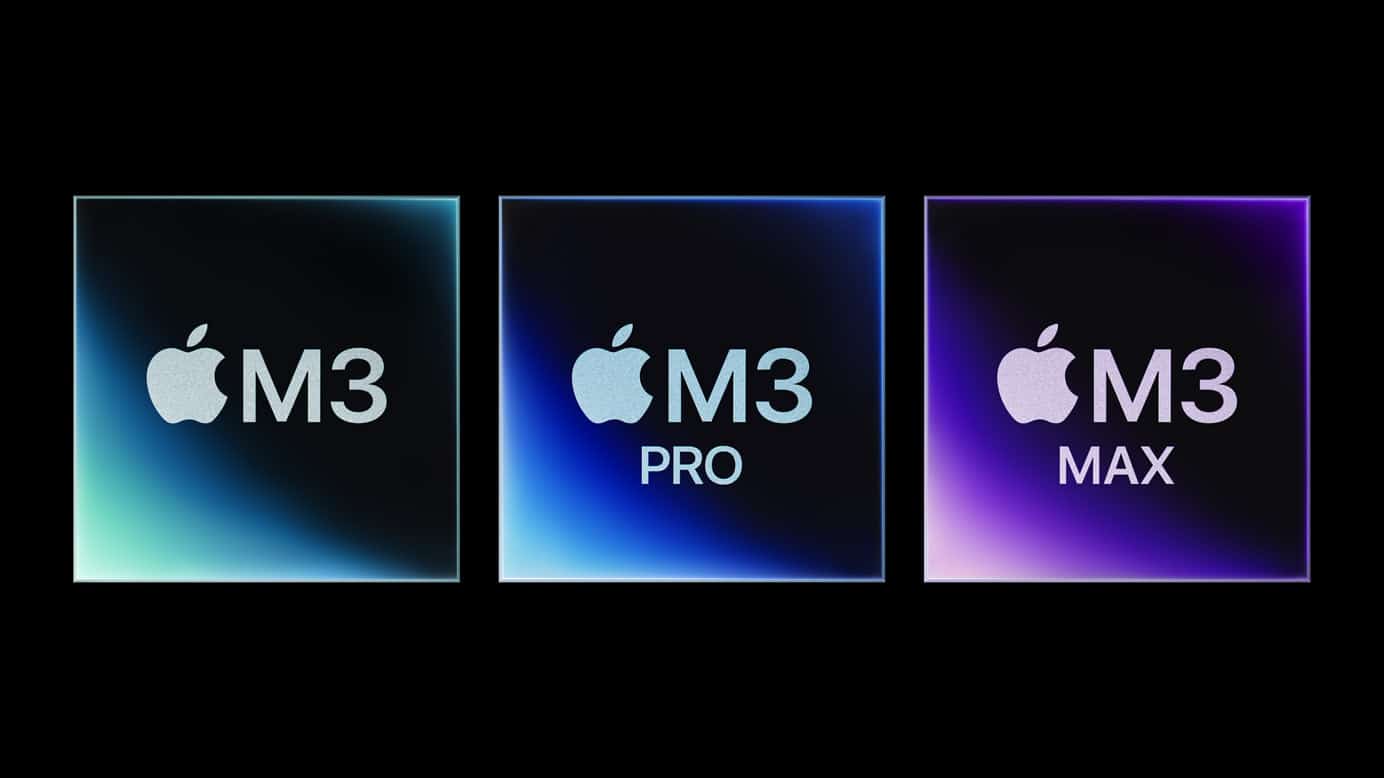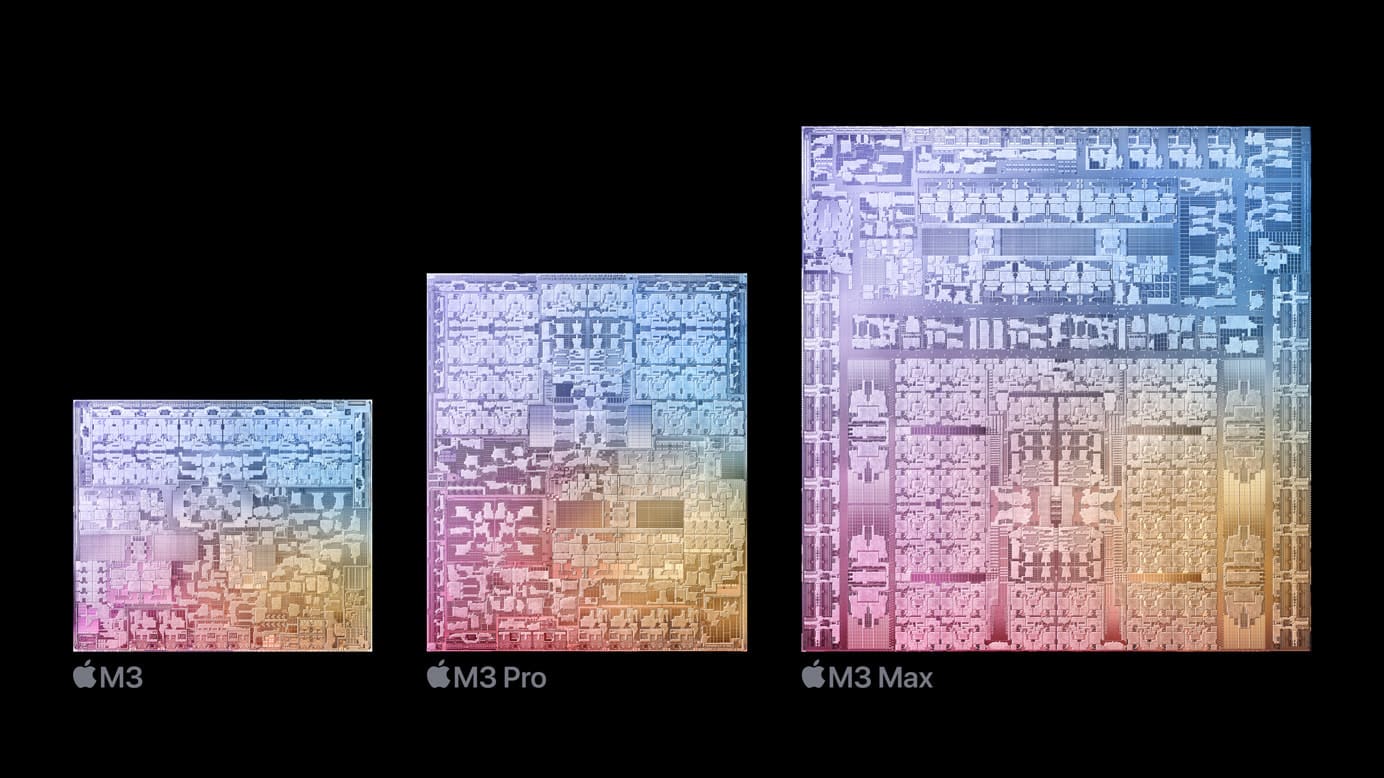
The star of Apple’s first primetime TV event was all-new silicon.
During the Halloween-eve event, Apple unveiled its next generation M-Series chips. M3, M3 Pro, and M3 Max are the first chips built using the 3-nanometer process for personal computers. Three nanometer process technology allows more transistors to be packed into a smaller space, bringing improvements to speed and efficiency, according to Apple.
During the event, Apple’s senior vice president of Hardware Technologies Jony Srouji spent a good deal of time talking about the new GPU in the M3 family of chips. Apple says it represents “the biggest leap forward in graphics architecture ever for Apple silicon.”
Dynamic Caching
Srouji said that what sets M3 apart is the GPU’s Dynamic Caching ability, calling it the “cornerstone of our new GPU architecture.”
“In a traditional graphics architecture, software determines the amount of local GPU memory that’s allocated to upcoming tasks,” Srouji explained. “This results in reserving the same amount of memory for every task based on the needs of the single most demanding task.”
This means that the GPU is underutilized in these traditional architectures especially in complex programs like pro apps. With Dynamic Caching, the M3 GPU dynamically allocates memory in hardware and in real time.
“So, only the exact amount of memory that is needed is used for each task,” Srouji said. “This dramatically increases the average utilization of the GPU which significantly increases performance for the most demanding apps and games.

Additional features enabled by the M3 GPU are hardware accelerated mesh shading and ray tracing. Mesh shading brings greater capability and efficiency to geometry processing, enabling more graphically complex scenes. Ray tracing models the physical properties of light as it interacts with elements of a scene.
This is the first time hardware accelerated ray tracing has been available on a Mac and will allow game developers to create more deeply immersive environments while mesh shading will enable more visually complex scenes in games and graphics-intensive apps.
Apple says that the M3 GPU offers up to 65 percent more performance than the M1 GPU.
This combination also allows for Pro apps to deliver 2.5x faster rendering than M1 chips and 1.8x faster than M2 chips.
CPU
M3 features an improved CPU as well, with architectural improvements that allow for performance cores that are 30% faster than those in M1 and efficiency cores that are 50% faster.

Neural Engine and Media Engine
Apple has also made improvements to the Neural Engine in M3 making it 60% faster than the Neural Engine in the M1 family of chips. Apple says this will make AI and machine learning workflows faster.
All three M3 chips also have an improved media engine that provides hardware acceleration to popular video codecs. With M3, Apple has added Media Engine support for AV1, the format preferred by streaming services like YouTube and Netflix.
One particularly cool aspect of M3 Max is that it has two dedicated ProRes engines, making video work in the highest resolutions fast and fluid, no matter which NLE you work in.
M3 vs. M3 Pro vs. M3 Max
M3
- 25 billion transistors (5 billion more than M2)
- 10-core GPU that is 65% faster than M1 for graphics performance
- 8-core CPU with 4 performance cores, 4 efficiency cores
- CPU is up to 35% faster than M1
- Up to 24GB of unified memory
M3 Pro
- 37 billion transistors
- 18-core GPU that is 40% faster than M1 Pro
- 12-core CPU with 6 performance cores, 6 efficiency cores
- CPU is up to 30% faster than M1 Pro
- Up to 36GB of unified memory
M3 Max
- 92 billion transistors
- 40-core GPU that is 50% faster than M1 Max
- 16-core CPU with 12 performance cores and four efficiency cores
- CPU is up to 80% faster than M1 Max
- Two ProRes-dedicated engines for fluid video post-production work in DaVinci Resolve, Adobe Premiere Pro, and Final Cut Pro.
- Up to 128GB of unified memory allowing for AI developers to work with even larger transformer models with billions of parameters.








